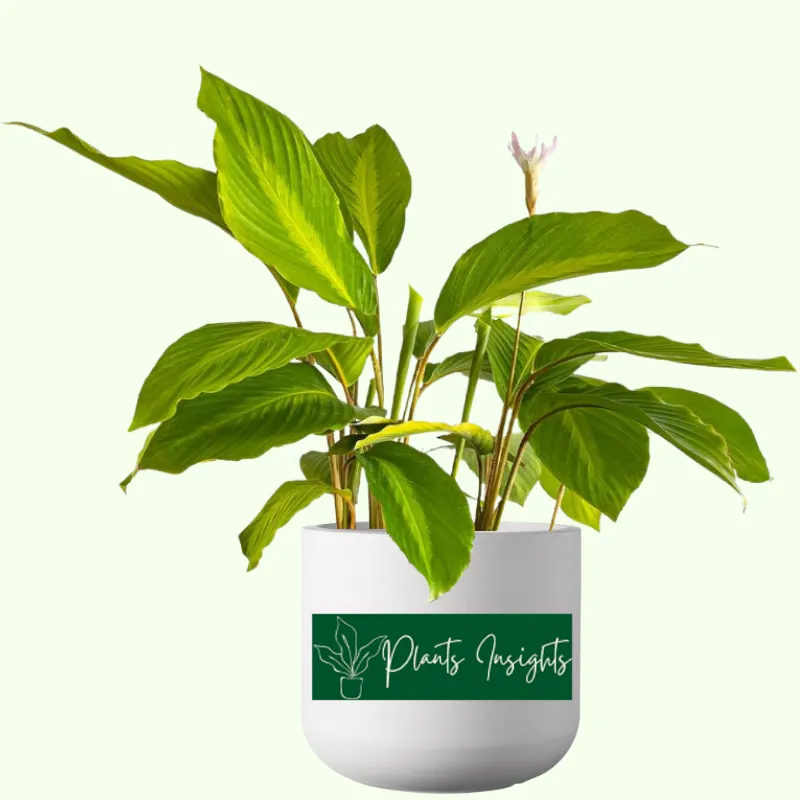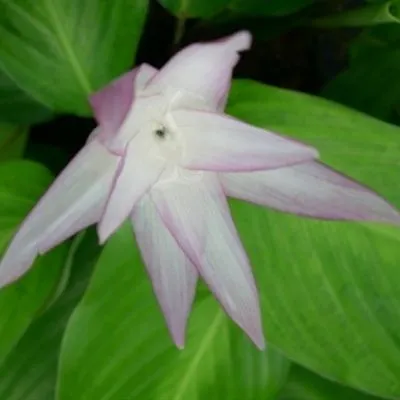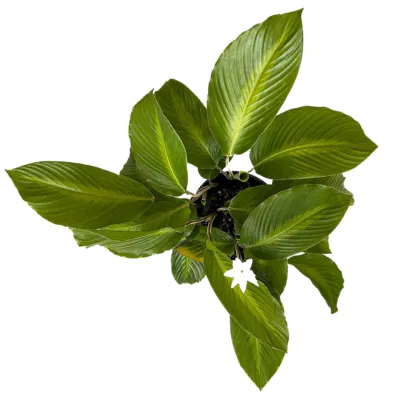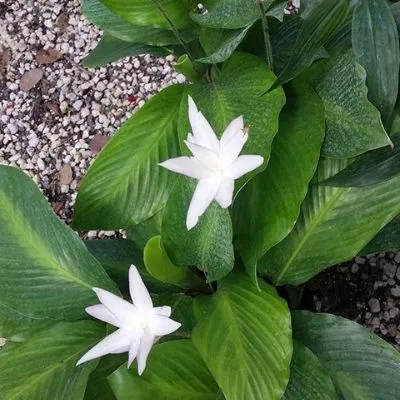Calathea Loeseneri is a fabulously large Calathea with elongated oval-shaped green foliage having light green colored midrib, increasing the leaves’ allure. A long erect petiole attaches foliage that is not patterned, contrary to other Calatheas. However, its beautiful star-shaped flower is the feature that makes it an eyecatcher for plant lovers. The blooms consist of white to pinkish lance-shaped petals on a long delicate stalk, which will bring a lot of grace to your garden.

Prominent Family Members: Calathea White Star, Calathea Misto, Calathea Fasciata, Calathea Roseopicta, Calathea Flamestar, Calathea Lutea, Calathea Freddie
Essential Products:
How to care for Calathea Loeseneri?
Like other Calathea species, Calathea Loeseneri’s care requires a shaded area to avoid direct sunlight and a hot and humid atmosphere for extraordinary bloom. Additionally, nutrient-rich moist soil will make it even more lively and flourishing.

Bringing Calathea Loeseneri home
When you receive your Calathea Loeseneri at home, check the plant thoroughly for pests, especially the back of the leaves, as they usually hide there. Even if you find the plant pests or disease-free, keep it away from your houseplant collection for at least two weeks to monitor because bacterial and fungal diseases take some time to show symptoms. After successful quarantine, add the plant to your indoor collection.

Star-shaped flower of Calathea Loeseneri

What is the Light requirement for Brazilian Star?
Calathea requires semi-shaded or fully shaded areas as they used to live in the Brazilian rain forest. Although it can bear the morning’s less intense sunlight, the best place to keep this plant indoors is the east to the west-facing window.

Humidity and temperature
Being a tropical plant, Calathea Loeseneri loves to live in a hot and humid environment. The humidity level shall not be less than 50% because its ideal humidity level falls between 60 to 70 %. To monitor and maintain the humidity level using a hygrometer and a humidifier.
Calathea Loeseneri is prone to damage if kept in cold environments. The ideal temperatures fall within 65 to 80 ℉, and the plant will suffer if the temperature drops below 60 ℉.

How often should I Water Calathea Loeseneri?
Calathea Loeseneri has different seasonal requirements; In the summer and growing season, it requires water twice a week or when you feel the upper two inches of soil layer has become dry. Whilst in winter, water the plant once a week. However, the tip is o keep checking the moisture level to set the watering frequency.
The best practice is to use a moisture meter to check whether the soil is dry, moist, or wet and act accordingly.

Soil requirement for Calathea Lotus Pink
Perfect soil for Calathea Loeseneri must be well-draining and moist absorbent. Make a mixture of the following constituents in stated ratios to maintain the required soil capabilities and make it rich in nutrients.
Note: Avoid using regular soil with less drainage capability; itwill make soil soggy or waterlogged, which can damage the plant’s roots.
If you plan to use a ready-made soil mix from the market, the African Violet mix is the best match.

Pruning
Please keep removing dead or damaged leaves periodically to enhance the Calathea Loeseneri beauty. This practice will keep your plant in ideal shape and size. Always ensure to use sharpened and sterilized scissors or knives to prune your Calathea.
Moreover, develop a practice to wipe clean the Calathea Loeseneri leaves once a month. Leaves cleaning will improve plants’ looks as well as you will be able to remove the pests in their early phase of development.

Calathea Loeseneri’s fertilization requirement
Fertilize your plant once in a growing season to keep the plant healthy and blooming. The fertilizer provides additional nutrients to plants for frequent blooming.

Beautiful foliage of Calathea Loeseneri
Use a nitrogen-based houseplant fertilizer containing phosphorus and potassium in equal ratios for best results.
Note: Overfertilizing will burn the foliage and delicate flowers of the plant, so always follow instructions by the manufacturers.

Repotting the Calathea Lotus Pink
Naturally, Calathea Lotus Pink grows moderately fast and requires repotting periodically, at least once every two years. Repotting is necessary when you see your plant has outgrown the pot and its roots are making their way out of the drain hole.
Please follow our simple set of instructions for repotting.

Propagation of Calathea Star
Calathea Loeseneri can be propagated through root division; while propagating your plant, follow the steps below.
Note: Other propagation methods like through seeds and cuttings have not been successful for Calathea Loeseneri.

Is Calathea Loeseneri Toxic?
Calathea Loeseneri is a non-toxic plant that causes no harm to humans and pets, even if they accidentally ingest them. Loeseneri blooms are showy and attract kids and pets, but you don’t have to worry about them plating with them as the plant is entirely harmless.

Nontoxic Calathea Loeseneri

Diseases and pests
Diseases
In most cases, Calathea Lotus Pink gets infected by fungal diseases called root rot which usually occurs due to overwatering or soggy soil. Make a scheduled watering routine considering soil moisture content to avoid root rot.
If your plant’s leaves start turning yellow from the bottom of the plant or the leaves are drooping, it suffers from root rot. Please remove the plant from the soil, cut off the infected part of the roots, and place it in a new pot with moist soil.
After washing it with antifungal soap, you may use the old pot and repot the plant in fresh, moist soil.
Pests
Calathea Loeseneri doesn’t get infected by pests easily; however, the most common pests of Calatheas are spider mites, scale, thrips, and mealybugs. Please keep inspecting the pant for any sign of infestation and if the pests attack the plant, remove them manually by wipe cleaning as an initial step.
You can also apply neem oil (a natural insecticide) on the infected leave. If the infection is severe and prolonged, use pesticides
